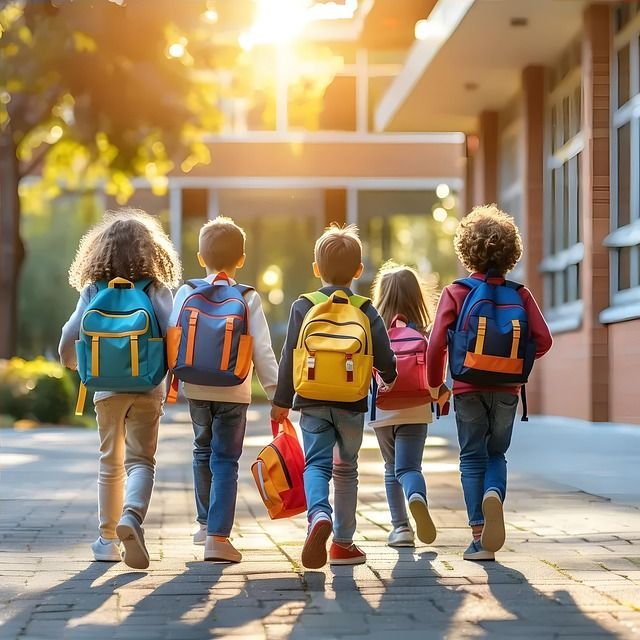6 Tips to Prepare Your Home for Science Experiments
Imagine this scene. Your child comes home, raving about science. Maybe they read a great STEM book. Maybe their teacher showed them a cool experiment. Maybe the school hosted a fun and amazing science school assembly. Regardless, now your child is excited about science. And they want to start doing experiments. In your home. How do you prepare?
I’m STEM science assembly performer Joe Romano. My “The Magic of Science” school assembly gets kids energized and excited about science. Each month I write articles like this to help busy parents and school administrators.
If your child is jazzed about science, embrace it! But there are simple yet effective steps you can take to prevent your child from blowing up your home with their ‘mad scientist’ experiments. Science is fun, but safety first!
Let’s look at what you can do to keep your child safe (and from turning into a comic book-style super villain…)
Science at Home Safety Tip #1: Have a Dedicated Space for Science
Sometimes kids become so fixated on what they are doing that everything else fades into the background. Without setting boundaries and rules, you may find yourself walking into your bedroom only to encounter a smoldering hole where your bed used to be.
The solution? Create a dedicated space for your child’s wild experiments. This space should be clear of anything flammable or anything that could be damaged or destroyed by your child’s evil scientific machinations.
Once you have a dedicated space, it’s time to prepare your child’s lab.
Science at Home Safety Tip #2: Proper Ventilation
Many science experiments use seemingly innocuous household materials. But even a few drops of ammonia for that acid/base experiment could be enough to cause your child to suffer side effects from breathing in caustic chemicals.
Make sure your child’s laboratory is sufficiently ventilated. And while you are at it, it’s a good idea to supervise your child to make sure they follow ventilation protocols to stay safe. After all, even the best mad scientists can forget things.
Finally, be sure there is an easy exit in case of emergencies. When your child creates that sentient blob, you’ll want to get away from it as quickly as possible.
Science at Home Safety Tip #3: Proper Safety Materials
Most science experiments require materials. From beakers to scissors to chemicals to levers, your budding scientist will need plenty of raw material to get ‘sciencing.’ To prevent potential chaos, sit down with your potential evil genius. Plan out the experiments.
Go through all the materials needed. Gather them together. Be sure to include some safety equipment so your child doesn’t split an atom or lop off a finger. Having everything gathered and organized before conducting experiments can reduce the potential for accidents.
Science at Home Safety Tip #4: Keep a Notebook
Despite what your fledgling troublemaker may think, science is more than just mixing stuff together and causing explosions. Science is about tracking data. Measuring results. Seeing if desired results are repeatable. Adjusting one variable and testing again.
So keep your little scientist organized. Encourage them to document every experiment. Help them track their results. And, secretly, this keeps your young scientist accountable. If you discover the family dog has suddenly turned purple, you can retrace their steps to find out where things went wrong.
Science at Home Safety Tip #5: Cleaning Up
Before unleashing your scientist on the world, teach them about safety and organization. Keeping clean and safety go hand in hand. But why?
Teaching your child to clean up their experiments helps keep their laboratory neat and tidy. And it keeps materials from mixing with other undesirable materials. A clean laboratory is unlikely to experience any horrible mutations from wreaking havoc on the world.
Science at Home Safety Tip #6: Adult Supervision
This may break your little evil genius’ heart. But young scientists shouldn’t be left to their own devices. Even simple experiments can easily go awry if the experimenter’s attention wanders even for a moment. Don’t believe me? Check out episodes of MythBusters. They were highly trained experts, but many of their experiments sometimes resulted in near-disastrous results where people did get hurt.
Get Your Entire School Excited About Science
Want to energize your entire school for science? My “Is It Magic or Science?” assembly is a STEM-based riot! With wacky experiments, join-in fun, sound effects, colorful backdrops, and laugh-out-loud antics, your students will love every minute.
Contact me today to find out more information. I guarantee this assembly program will be the highlight of your entire school year!



